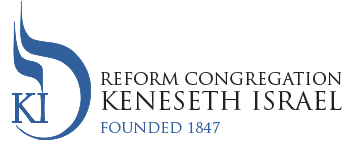This coming Shabbat, we shall read the portion Aharei Mot/After the Death (of the two older sons of Aaron). We continue our progression through the third Torah book of Vayikra/Leviticus. As I have indicated in previous weeks, this book is filled with complex laws concerning the beginning of the sacrificial offerings of animals and grains to be administered by the High Priest, Aaron, and his remaining two sons. Many of these laws and descriptions have little relevance to our lives today, and in some cases are considered by the Reform Rabbinic scholars to be of only historical interest, not descriptive of how we should live our lives. A few weeks ago, I discussed the theory of modern Biblical thought, which assigns almost the entire book of Vayikra/Leviticus to the P section, the last layer of the Torah written by the Priestly community in about 600 Before the Common Era (BCE).
In our Plaut Torah volume, we read that, beginning with Acharei Mot, we read laws about Holiness, or Kedushah: what we must do to maintain our personal and collective status as Holy, or separate. There are contemporary scholars who call this section the letter H, for Holiness Code. In chapter 16, we are taught that only Aaron, the High Priest, is permitted to enter the “Holy of Holies” area, the innermost shrine of the moveable Tabernacle, and only on Yom Kippur. Only Moses is allowed to enter this area at any time. There are specific instructions as to how Aaron should dress when he enters the Holy of Holies.
The text makes the first mention of the Yom Kippur observance: “And this shall be to you a law for all time: in the seventh month, on the tenth day of the month (of Tishrei), you shall practice self-denial. (You shall fast!) And you shall do no manner of work, neither the citizen nor the alien who resides among you. For on this day shall atonement be made for you to purify you of all your sins, you shall be pure before the Eternal. (16:29-30)” This is the source of Yom Kippur to this day. We read about the prohibition of consuming blood. This is the basis of the rabbinic laws about preparation of meat for our consumption.
The structure of the Hebrew calendar and the assignment of the weekly Torah portions to specific weeks require us to study these portions. Occasionally, the choice of the weekly portion is affected by other factors in the Jewish calendar year, and this is the case this year in 5782.
Here are the issues that we must confront and understand:
This week, we are concluding the festival of Passover.
The Torah prescribed holidays invariably cause interruptions in the weekly Torah reading schedule. Each holiday has its own required Torah reading that replaces the weekly assigned reading.
In the Reform Movement, Passover is observed for seven days! The first and last day of the Holiday have pre-assigned readings. If one of these two sacred days occurs on Shabbat, the special Torah reading for Passover replaces the scheduled reading!
But this year there is an added complication: in the Reform tradition, the last day of Passover is Friday. The next day is Shabbat, and our Reform community throughout the world will read Acharei Mot.
The Conservative and Orthodox Movements observe Passover for eight days! For the Orthodox and Conservative Jews, the last day of Passover, April 23, is Shabbat. The special Passover eighth day reading replaces Acharei Mot in Conservative and Orthodox synagogues. Acharei Mot is therefore postponed until Shabbat morning, April 30.
In the State of Israel, ALL Synagogues, Orthodox, Conservative (Masorti, using the Hebrew word), and Israeli Reform, observe Pesach for seven days. Their congregants will be reading the portion of Acharei Mot on April 23.
In North America, Reform Jews will hear Acharei Mot on April 23, and Conservative and Orthodox Jews will hear Acharei Mot on April 30. If a family celebrates Pesach in Israel and then goes home, they will hear Acharei Mot twice: April 23th, and when they return home on April 30th.
When I looked at the URJ calendar, I learned that the American and Canadian Reform communities divide Acharei Mot into two sections: the first is read on April 23rd, and the second is read on April 30th, along with all Jews the world over! From April 30 onward, Reform, Conservative, and Orthodox synagogues will read the same Torah portions.
The Israeli synagogues stay one week ahead of Jews outside of Israel for two months; then there is an adjustment so that all Jews the world over will be reading the same portion at the same time!
My wife, Ellen, asked me “what is the source of all these complications?” We must remember that our religious and ritual lives are based on intersections among the Bible, Jewish law as interpreted by rabbinic scholars of all movements, the solar calendar and the lunar calendar. The solar calendar is based on the Earth’s revolution around the sun every 365 and a fraction days. Our Jewish life is based on the interaction of the solar calendar and the lunar calendar, derived from the Moon’s rotation around the Earth every 29 and a fraction days. After 3000 years or so, astronomy, mathematics, Jewish law, and rabbinic seichel have all combined to give us the calendar that we live by to the present day.
I hope I have made this complicated calendrical issue somewhat clear. Write to me if you have questions!
My entire family will be celebrating Pesach together. All the Tilman’s join me in wishing you a joyful completion of the Pesach Holiday and Shabbat Shalom.
